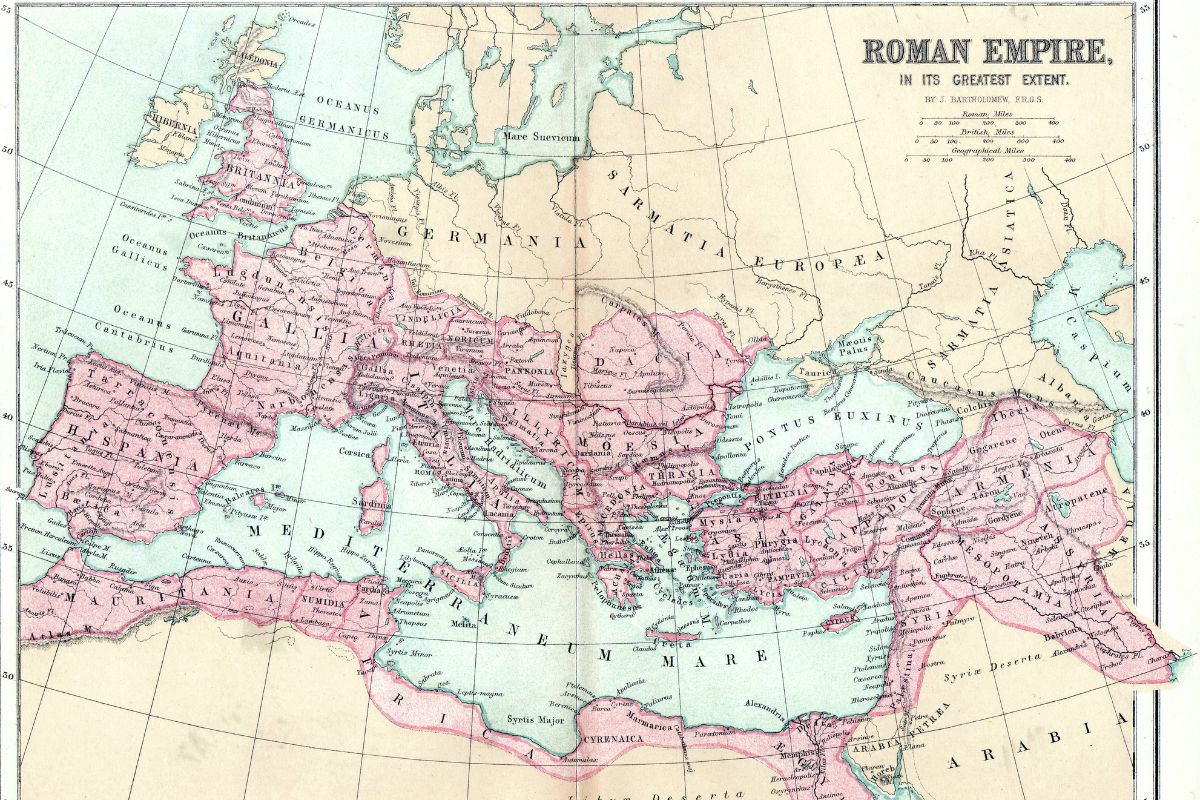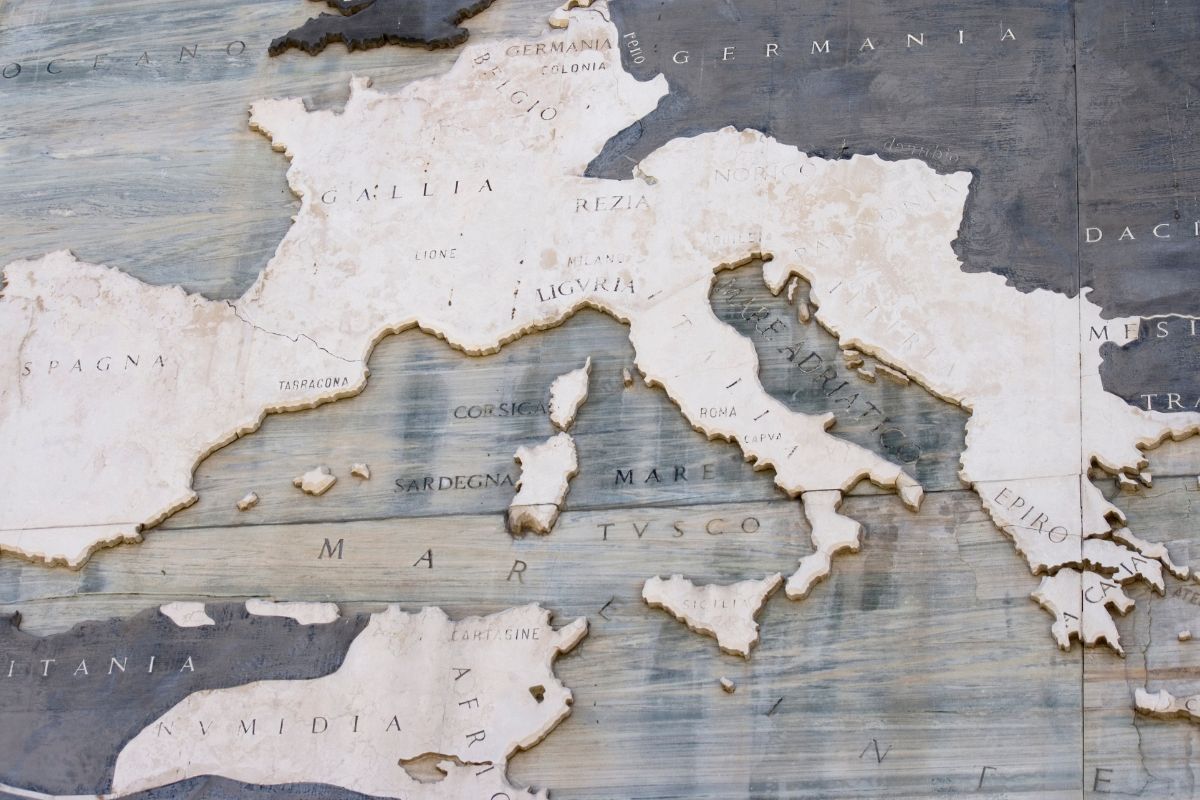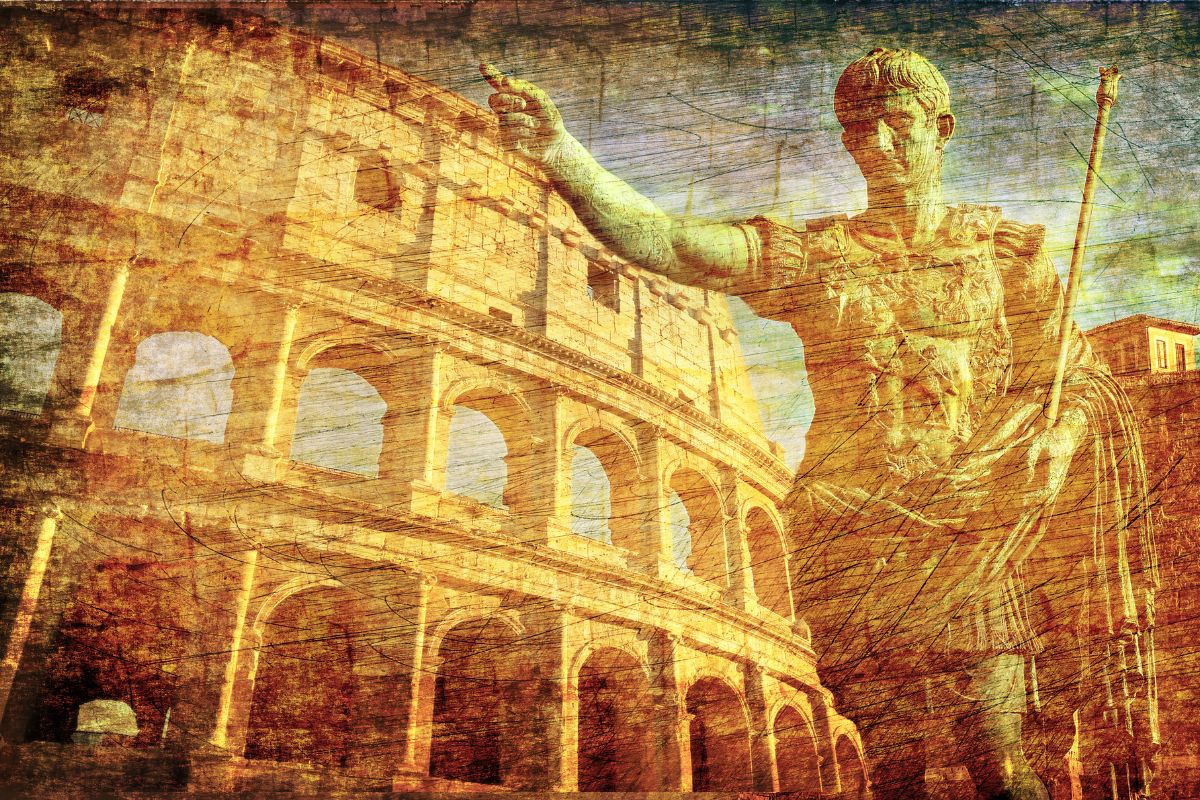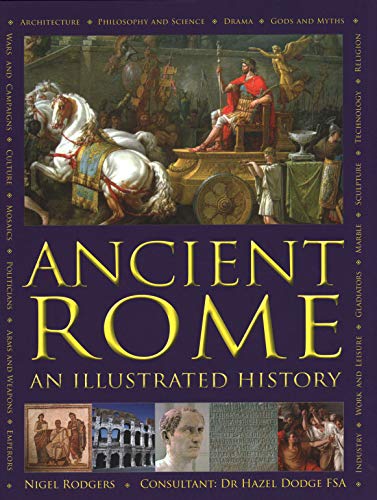The Roman Empire
The Roman Empire, Imperio Romano, is an iconic symbol of ancient power and grandeur, but how big was the Roman Empire at its peak? Spanning centuries and continents, its territorial reach reached unprecedented proportions.
In this exploration, we delve into the magnitude of the Roman empire’s peak, examining the vast expanse of its territories, its diverse cultures, and the factors contributing to its unparalleled success.
How Long Did the Roman Empire Last?
The Roman Empire lasted remarkably long, encompassing several distinct phases. The traditional date marking the foundation of Rome is 753 BC, according to Roman mythology. However, the Roman Republic, which preceded the empire, was established around 509 BC. It was a representative democracy until the transition to imperial rule.
It then faced internal conflicts, wars, and political transformations, ultimately leading to the rise of Julius Caesar. In 27 BC, Caesar’s grandnephew and adopted son, Octavian, became the first Roman Emperor, taking the name Augustus. This event is often considered the beginning of the Roman Empire.
The Western Roman Empire, which is usually associated with the term “Roman Empire” in a broad sense, faced significant challenges throughout its existence. It officially ended in 476 AD when the Germanic chieftain Odoacer deposed the last Roman emperor, Romulus Augustulus. This event marked the downfall of the Western Roman Empire.
Therefore, from the traditional founding of Rome in 753 BC to the downfall of the Western Roman Empire in 476 AD, this empire lasted for approximately 1,229 years. However, it’s important to note that the Roman Empire did not cease to exist entirely in 476 AD.
The Eastern Roman Empire, widely known as the Byzantine Empire, lasted about a thousand years until the downfall of Constantinople in 1453 AD. If we include the Byzantine Empire, the Roman Empire existed for over 2,200 years.

How Big Was the Roman Empire at Its Peak?
At its peak, the Roman Empire map shows it was one of the largest empires in history, covering a vast expanse of territory. The territorial extent of this empire varied over time, but at its zenith around the 2nd century AD, it encompassed an estimated 2 million square miles (5 million square kilometers).
This immense empire stretched from the British Isles towards the northwest to the Arabian Peninsula in the southeast and from the Iberian Peninsula in the West to the Black Sea in the northeast.
The empire comprised numerous provinces with unique characteristics and cultures. Major cities like Rome, Alexandria, and Antioch were pivotal centers of the empire’s political, economic, and cultural activity.
It reached its greatest territorial extent under Emperor Trajan (98–117 AD) but faced challenges and eventual decline in the following centuries. By the 5th century AD, various factors, including internal strife, economic difficulties, and external invasions, led to the crumble of the Western Roman Empire in 476 AD.
Where Was the Roman Empire Located?
The Roman Empire was in Southern Europe, and Western Asia spanned three continents: Europe, Asia, and Africa. The Roman Empire covered a vast territory at its height, with its core centered on the Italian Peninsula.
The capital city, Rome, was strategically situated on the western side of the Italian Peninsula along the Tiber River. The territorial extent of the Roman Empire included:
Southern and Western Europe
The Italian Peninsula served as the empire’s heartland, but Roman influence extended far beyond. The empire encompassed regions such as Gaul (modern-day France), Hispania (modern-day Spain and Portugal), Britannia (modern-day United Kingdom), and parts of Germany.
North Africa
The Roman Empire extended its control across North Africa, including provinces like Egypt, Carthage (in modern-day Tunisia), and present-day Algeria and Morocco.
Western Asia
The Roman Empire expanded into the eastern part of the Mediterranean, incorporating regions such as Greece, Asia Minor (modern-day Turkey), Syria, and Judea (the area around modern-day Israel and Palestine).
The Balkans
The Balkan Peninsula, comprising regions such as Illyria and Dacia, was part of the Roman Empire.
Parts of the Middle East
The Roman Empire reached into parts of the Middle East, including Mesopotamia and Armenia. The Mediterranean Sea served as a unifying factor for the diverse regions within the empire, facilitating trade, cultural exchange, and communication.
The extensive road network, exemplified by the famous Roman roads, further connected the far-reaching provinces of the empire.
It’s important to note that the Roman Empire evolved with territorial expansions and contractions, and it existed in two main phases: the Roman Republic and the Roman Empire. The Western Roman Empire crumbled in 476 AD, while the Eastern Roman Empire persisted until the fall of Constantinople in 1453 AD.

When Was the Roman Empire Formed?
The formation of the Roman Empire is a complex historical process that evolved over centuries. The Roman Empire came from the Roman Republic, which, in turn, developed from the early Roman Kingdom.
Here’s a brief overview of the primary stages in the formation of the Roman Empire:
Roman Kingdom (753 to 509 BC)
According to legend, Rome was founded in 753 BC by Romulus and Remus. The early Roman state was a monarchy, with kings ruling the city-state. The last Roman king, Tarquin the Proud, was overthrown in 509 BC, leading to the establishment of the Roman Republic.
Roman Republic (509 to 27 BC)
The Roman Republic had a system of checks and balances, with power distributed among various offices and institutions. It was not an empire in the traditional sense but a powerful republic with territorial ambitions.
Rome expanded its influence through military conquests, incorporating neighboring territories into the Roman Republic. The Punic Wars against Carthage (264–146 BC) and the conquest of Hellenistic territories in the East significantly shaped Roman power.
Transition to Empire (Late Republic)
In the 1st century BC, Rome experienced political turmoil, social unrest, and power struggles among political and military leaders. Julius Caesar, an army general, played a critical role in the crumble of the Roman Republic. His crossing of the Rubicon River in 49 BC and subsequent civil war marked a turning point.
A power struggle ensued after Caesar’s assassination in 44 BC, leading to the rise of Octavian (later known as Augustus), Caesar’s adopted son.
Founding of the Roman Empire (27 BC)
Octavian emerged victorious in the civil wars, and in 27 BC, he proclaimed himself Princeps (First Citizen), effectively ending the Roman Republic.
The Senate granted Octavian the title Augustus in 27 BC, bringing the start of the Roman Empire. Augustus became the first Roman emperor, and he ruled until 14 AD. Augustus implemented political and social reforms, establishing a new era of stability known as the Pax Romana (Roman peace).
The formation of the Roman Empire was a gradual process marked by military conquests, political changes, and the consolidation of power. Augustus’s principate laid the foundation for a centralized imperial government, and subsequent emperors expanded the empire’s borders and left a lasting legacy on Western civilization.
The Fall of the Roman Empire
The fall of the Roman Empire is a complex historical event that unfolded over several centuries and involved internal and external factors. The decline and fall of the Roman Empire occurred in two main phases: the fall of the Western Roman Empire and the persistence of the Eastern Roman Empire.
1. Fall of the Western Roman Empire (476 AD)
Internal Decline
The Western Roman Empire faced internal challenges such as political instability, economic decline, social unrest, and military problems. Corruption, excessive taxation, and inefficiency in governance contributed to the weakening of central authority.
Invasions
Barbarian invasions, particularly by Germanic tribes and the Huns, severely threatened the Western Roman Empire. In 410 AD, the Visigoths sacked Rome, and in 455 AD, the Vandals followed suit.
The final blow was in 476 AD when the Germanic chieftain Odoacer deposed Romulus Augustulus, the last emperor of the West.
2. Persistence of the Eastern Roman Empire (Byzantine Empire)
Although the Western Roman Empire fell, the Eastern Roman Empire, centered around Constantinople, endured. This period is often referred to as the Byzantine Empire, though the people of the time considered themselves Romans.
The Byzantine Empire faced challenges, including external threats from Persian and Islamic forces, internal strife, and economic difficulties. However, it remained a formidable power in the East for centuries.
Factors Contributing to the Fall
Political Instability
The Western Roman Empire witnessed a series of weak and short-lived rulers, making it difficult to address its mounting challenges.
Economic Decline
High taxation, inflation, and economic mismanagement contributed to economic decline. The reliance on slave labor and the stagnation of agricultural practices also impacted the economy.
Military Weakness
Once a formidable force, the Roman military faced challenges such as corruption, lack of discipline, and dependence on mercenaries. Additionally, the vastness of the empire made defense challenging.
Barbarian Invasions
The migrations and invasions of various Germanic tribes, Huns, and others put immense pressure on the Roman frontiers.
Legacy
The fall of this empire marked the end of ancient Roman rule in the West. The fragmented territories in Western Europe eventually gave rise to medieval kingdoms and laid the foundation for the feudal system.
The Eastern Roman Empire, with Constantinople as its capital, continued to exist for nearly a thousand years, contributing to the preservation and transmission of Greco-Roman culture. Constantinople eventually fell to the Ottoman Turks in 1453, ending the Byzantine Empire.
The fall of the Roman Empire remains a topic of historical debate, with scholars considering a combination of internal decay and external pressures as contributing factors. The legacy of Rome, however, lives on in its enduring contributions to law, governance, architecture, language, and culture.
The Different Ways of Measuring the Empire
The Roman Empire was vast and complex, and historians and scholars used various methods to measure its size and significance. Here are different ways in which the extent and impact of the Roman Empire are measured:
Geographical Size
One of the most straightforward ways to measure the Roman Empire is by its geographical extent. Historians estimate the empire covered approximately 5 million square kilometers at its height, spanning three continents: Europe, Asia, and Africa.
Population
Another critical measure is the population of the Roman Empire. Estimating the empire’s total population is challenging, but it was roughly tens of millions, with some estimates suggesting around 50 to 60 million people during its peak.
Economic Power
Economic metrics, such as GDP (Gross Domestic Product) or economic output, provide insights into the empire’s economic power. Rome was a major economic center with a sophisticated trade, agriculture, and taxation system. Assessing the economic impact helps gauge the empire’s influence on global trade and prosperity.
Cultural and Linguistic Influence
The spread of Roman culture, language (Latin), and legal systems can be a measure of the empire’s cultural influence. The Latin language, in particular, profoundly impacted the development of Romance languages and continued to influence legal terminology in many modern legal systems.
Architectural and Engineering Achievements
Examining the Romans’ architectural and engineering accomplishments provides insight into their civilization’s scale and sophistication. The construction of monumental structures such as the Colosseum, aqueducts, and roads reflects the empire’s engineering prowess.

Military Power
The strength and organization of the Roman military are crucial measures of the empire’s power. The Roman legions were highly disciplined and played a central role in expanding and maintaining the empire. The effectiveness of the Roman military is evident in its ability to control vast territories.
Longevity
The duration of the Roman Empire, from the founding of Rome to the fall of Constantinople in 1453, is a measure of its longevity. The empire endured for over two millennia, undergoing transformations and adaptations over the centuries.
Administrative Structure
The efficiency and effectiveness of the Roman administrative system, including the division of provinces, governance, and legal institutions, contribute to an understanding of the empire’s organizational prowess.
Social and Technological Contributions
Assessing the social and technological contributions of the Romans, such as advancements in engineering, architecture, and governance, helps gauge their impact on subsequent civilizations and the development of human society.
Historical and Cultural Legacy
The enduring impact of the Roman Empire on subsequent civilizations and the shaping of Western civilization is a qualitative measure of its historical and cultural legacy. The Roman Empire laid the foundations for modern legal systems, governance structures, and cultural norms.
The measurement of the Roman Empire involves a multidimensional analysis that considers geographical, demographic, economic, cultural, military, and historical factors. Each of these measures contributes to a comprehensive understanding of the empire’s significance in the annals of human history.
Why Did Rome Grow So Big?
Rome’s remarkable expansion and growth into a vast empire comes from strategic, political, military, economic, and cultural factors. Understanding these key elements provides insight into why Rome became such a dominant and expansive power:
Strategic Location
Rome’s geographic location played a crucial role in its growth. Situated on the Italian Peninsula, Rome had access to fertile agricultural land, proximity to the Mediterranean Sea for trade, and a defensible position against potential invaders.
Military Prowess
Rome’s military strength and organization were central to its expansion. The Roman legions were disciplined, well-trained, and adaptable. They could defeat various adversaries, and the Roman military strategy often involved assimilating conquered peoples into the army, creating a diverse yet cohesive military force.
Political Structure
The Roman Republic, which later became the Roman Empire, had a flexible political structure, allowing new territories to be incorporated. The Roman system of governance, including the Senate and various magistrates, provided stability and adaptability to meet the challenges of expansion.
Assimilation and Citizenship
Rome had a policy of granting citizenship to conquered peoples, encouraging loyalty to the Roman state. This assimilation allowed for the integration of diverse cultures and populations into the Roman social and political fabric.
Mediterranean Dominance
Control over the Mediterranean Sea was a crucial factor in Rome’s growth. The Mediterranean served as a maritime highway that connected various regions, enabling the Romans to establish dominance in trade, communication, and naval power.
Cultural Adaptability
Rome displayed a remarkable ability to absorb and adapt elements of the cultures it encountered. This cultural flexibility facilitated the assimilation of diverse populations and contributed to the cohesiveness of the empire.
Expansion for Security
Rome often expanded its borders as a means of securing its frontiers. The belief in the need for defensive expansion to create buffer zones against potential threats contributed to the empire’s territorial growth.
Books To Read on the Roman Empire
If you want to read more, why not get one of the books below?
| # | Preview | Product | Price | |
|---|---|---|---|---|
| 1 |

|
SPQR: A History of Ancient Rome |
$21.30 |
Buy on Amazon |
| 2 |

|
The Storm Before the Storm: The Beginning of the End of the Roman Republic |
$10.99 |
Buy on Amazon |
| 3 |

|
Ancient Rome: An Illustrated History |
$28.73 |
Buy on Amazon |
Final Thoughts
The Roman Empire at its peak was a sprawling testament to human ambition, engineering ingenuity, and the ability to assimilate diverse cultures into a unified whole. Its vast territories, marked by bustling cities, intricate trade networks, and the assimilation of myriad cultures, influence our understanding of history.
The rise and fall of the Roman Empire remain a captivating narrative, illustrating the complexities and grandeur of one of the greatest civilizations the world has ever known.

Community of passionate writers and content creators who share a love for Italian heritage, culture, travel, food, and the Italian-American community. Our mission is to celebrate Italy’s rich history and traditions and connect with others who share the same passion.

